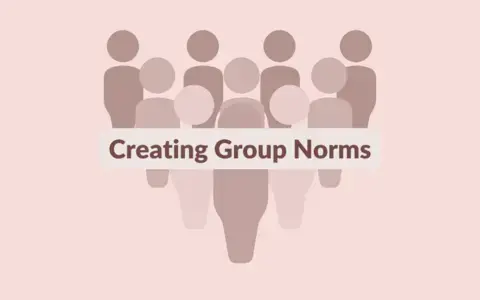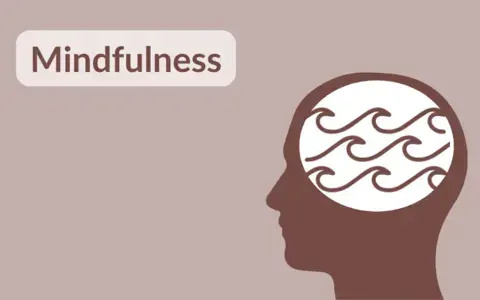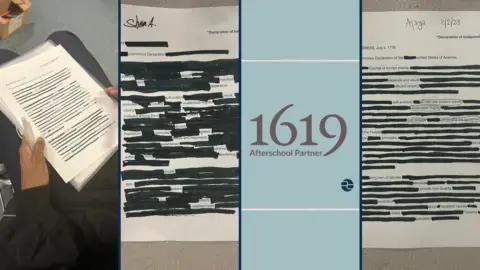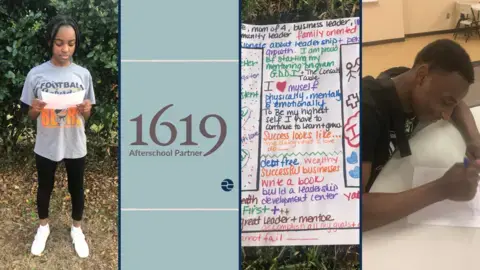About These Resources:
This collection offers students an engaging, affirming introduction to the concepts of history, culture, and resistance to injustice, all while centering the experiences of Black Americans. Activities guide students in multimedia explorations, personal reflections, and group discussions before culminating in a range of hands-on projects, including research, art, creative writing, and presentations. Students are consistently encouraged to reflect on how they can honor the contributions of Black Americans and build a more just world for all people.
Using elementary-friendly text and multimedia resources, students will learn about the history, culture, and resistance of early African civilizations; enslaved Black Americans; and contemporary Black American communities. At the core of these resources is The 1619 Project, an award-winning collection of journalism and history resources about the legacy of slavery and the contributions of Black Americans in moving the country towards its stated ideals.
How To Access These Resources:
Explore the "Activities" tab to find descriptions of each activity. The complete activities and resources are hosted on Mizzen Education, a free digital platform designed to help out-of-school time professionals deliver exciting learning opportunities that inspire, engage, and empower young learners. Register for free below!
After you register for an account, you can explore the Mizzen platform to find the Pulitzer Center's collections and activities. Alternatively, you can return to this page and use the "Activities" tab to find direct links to each activity on Mizzen, or click here for the full collection.

Below, you will find an outline of the activities available to afterschool educators. The complete activities, including step-by-step instructions, downloadable worksheets, and facilitation tips, are hosted on Mizzen, a free digital platform that helps out-of-school time professionals deliver exciting learning opportunities that inspire, engage, and empower young learners. Register for free below! Once you have a free account, you can click the links below to access complete activities.
Activity 1: What Is History, and Why Does It Matter?
In this activity, students define history and explore its significance. Students will analyze a short text, participate in group discussions, and develop personal and collective understandings of the importance of history. Then, students will reflect on their personal histories to create a Roots and Wings mural that charts where they come from and where they are going.
Activity 2: Dreaming of Freedom
In this activity, students will explore The 1619 Project to understand its key message and important historical terms. Then, they will reflect on what freedom means to them and creatively express their vision of freedom through poetry or drawing.
Activity 3: Reflecting on Slavery and Resistance with Born on the Water
In this activity, students read the picture book Born on the Water and explore the stories of African people who were kidnapped and brought to America, experiencing years of enslavement and oppression. Through reading and class discussion, students explore a legacy of Black American resilience, resistance, and joy.
Activity 4: Celebrating Culture, Resisting Erasure
What is culture, why does it matter, and what is the impact of cultural erasure? This activity explores these questions through text and multimedia exploration, discussion, and art. Students will read excerpts from the picture book Born on the Water that introduce the culture of the people of Ndongo prior to the trans-Atlantic slave trade. As a culminating activity, they will create art expressing aspects of their own cultures.
Activity 5: Early African Civilizations and Cultures
In this activity, students exercise their research and presentation skills while learning about the cultures of early African civilizations. Facilitators will model inquiry and research by co-creating a presentation on the kingdom of Ndongo, featured in the picture book Born on the Water, with the whole group. Students will then complete their own inquiry into an early African civilization and share their learning with their peers.
Activity 6: Memory and Place-Making
In this activity, students explore how enslaved people worked to stay connected to their cultures and homelands. They will read a short text illustrating this idea from The 1619 Project and discuss the importance of commemorating one's own cultural background, as well as learning about other cultures.
Activity 7: Legacy, Pride, and Hope: Ancestors and Their Freedom Dreams
In this activity, students explore the idea of literal and figurative ancestors, and reflect on the legacy of Black American resistance. They will learn how generations of Black Americans have fought for freedom and a better future by exploring an excerpt from the picture book Born on the Water and the photo essay “Hope” from The 1619 Project. As a culminating activity, students will create self-portraits alongside one of their literal or figurative ancestors, inspired by the photos from “Hope.”
Activity 8: Stories of Resistance: Queen Njinga, Elizabeth Freeman, and Today
In this activity, students explore different ways resistance can look through the stories of Queen Njinga and Elizabeth Freeman. Then, they will analyze text and multimedia to inform a written reflection and group discussion about the legacy of Black resistance and how we can resist injustice.
An optional extension activity guides students in completing a research project on Black leaders resisting injustice throughout history.
Activity 9: Protest Songs: Sounds of Resistance
In this two-part activity, students learn about the history of American protest songs and explore how Black Americans have utilized music to resist injustices and empower and uplift themselves.
Activity 10: The Importance of Black American Media
Since the 19th century, Black Americans have created newspapers, magazines, and other media outlets that entertain, unify, and uplift the race. In this activity, students will be introduced to this tradition as they discuss the importance of stories and media, learn about the functions of the Black American media, and explore contemporary examples of Black media.
In the first part of this two-part activity, students will learn about the history of the Black press and contemporary Black American media. During the second part, students will complete a research project in which they learn and share about Black media outlets past and present.

Want to spark conversations about the history of enslavement and Black resistance with your elementary learners, but looking for support with how to do that work in a healthy, engaging, and empowering way? We have support resources developed by the Pulitzer Center and educator partners who have experience bringing The 1619 Project into their own education spaces.
An important first step to establishing a compassionate, trusting, and inclusive learning environment is developing group norms. Norms are a powerful tool to set the tone of your program. This Pro Tip offers a template for creating them collaboratively with your students—and how to use them as a touchstone in your conversations.
As students engage with new and sometimes challenging content, such as The 1619 Project, they may feel grief, anger, and other difficult emotions. Fortunately, there are strategies to help you and your students to prepare for and navigate difficult conversations! This resource offers mindfulness strategies that your community can use to identify and navigate feelings that arise during difficult conversations.
Explore educator and students' first-hand accounts of engaging with The 1619 Project, and why this history matters on a personal level. Click the images below to explore reflections written by three educators, and their students' work.





